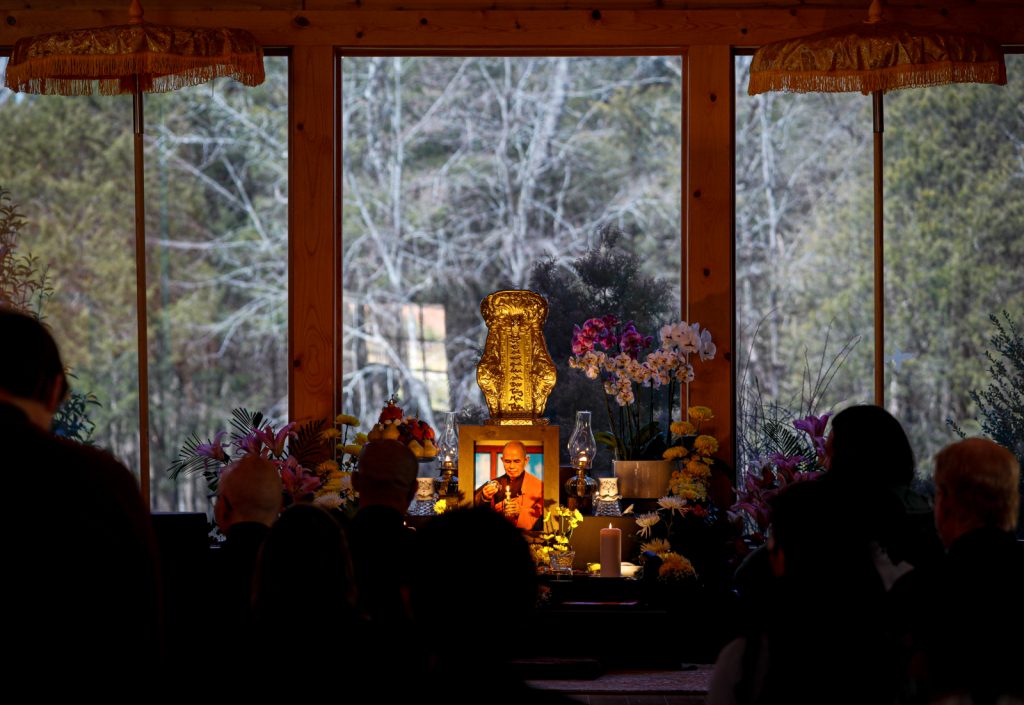Eight years ago I read a book that completely changed my paradigm of life. It was titled Living Buddha, Living Christ and was written by a small giant named Thich Nhat Hanh, a Vietnamese Buddhist monk whom I had never heard of.
I devoured the book. It spoke of things I had tried but never been able to verbalize. The pages spoke lovingly about unity, interfaith harmony, serving humanity through acts of kindness and compassion, and a self-contained tool called mindfulness, which would soon revolutionize my life. The words of Nhat Hanh were a salve for my soul, and they brought me to a deeper and more respectful understanding of Gautama Buddha, introducing me to the Christ I had been searching for my entire life but could never quite reach. With each turn of the page, I felt one less burden and one new insight. Concepts that had always been complicated for me because of dogma, the painful shame I felt after my failed attempts to be perfect, and confusion caused by the constant din of who was right and who was wrong in regard to my spiritual journey, suddenly became so simple, so alive and uncluttered, thanks to a Buddhist monk.
After finishing the book, I knew in my heart that I wanted to learn as much as I could from this man. Nhat Hanh is known affectionately as Thay (Vietnamese for teacher) to his monastic disciples and the lay practitioners that follow his path of mindfulness. I, too, became a student of Thay’s, and I quickly discovered he was so well known around the world he was mentioned in the same breath as Mother Teresa, Mahatma Gandhi, and Dr. Martin Luther King Jr., with whom Thay forged a deep and abiding friendship in the 1960s.
A few years after my introduction to Thay, I joined a sangha in Beaumont, Texas, and began incorporating mindfulness, prayer, and chanting into my daily life. It was around this time when I learned that Thay’s home monastery—Plum Village, which is located in France—had a satellite monastery called Magnolia Grove within a day’s drive of me in Batesville, Mississippi. Batesville is located just an hour south of Memphis, where Dr. King was assassinated, and it is also the home of Mt. Zion Baptist Church, where Dr. King delivered a sermon and speech on civil rights just two weeks before his assassination.
I attended my first retreat at Magnolia Grove in 2017, and I returned the following year as well. Though I had been looking forward to making this an annual pilgrimage, I encountered unexpected personal struggles in 2019, and not long after, the world as a global community experienced an unexpected calamity in the guise of COVID-19. So it was with great joy that I recently received an email from the monastery informing me that the retreat season was in full swing for 2022, as long as COVID-19 was kept at bay. I quickly signed up for the “Silence That Heals” retreat from March 16–20.
However, the trip was tempered by one unavoidable reality, one that would resonate with all those attending. Our beloved and venerable teacher, Thich Nhat Hanh, surrendered his physical body on January 22, 2022 at his root monastery in Hue, Vietnam at the age of 95. I meditated on the realization that this would be my first interaction with the monks and nuns of Magnolia Grove Monastery since Thay had passed away, but soon after my arrival, I realized that it was business as usual for them. We were greeted with the same positive, loving, and enthusiastic energy I had always experienced while on retreat there. My heart and spirit lifted—and I didn’t even know something was about to take place that would be one of the hallmark moments of my life.
I am a professional photographer and have been blessed to travel the world doing what I love to do most: documenting our planet and its people. Two weeks before the start of the retreat, I sent an email to the monastery offering my photographic services if needed. The monastery sits on 125 acres of beautiful northern Mississippi farmland, and given that I was going to bring my cameras and equipment anyway, I thought it would be nice to include the monastics. What I was not aware of, and in no way prepared for the honor of, was that the monastery was hosting a ceremony to welcome and receive relics and ashes of Thich Nhat Hanh on the last day of our retreat. I was absolutely stunned.
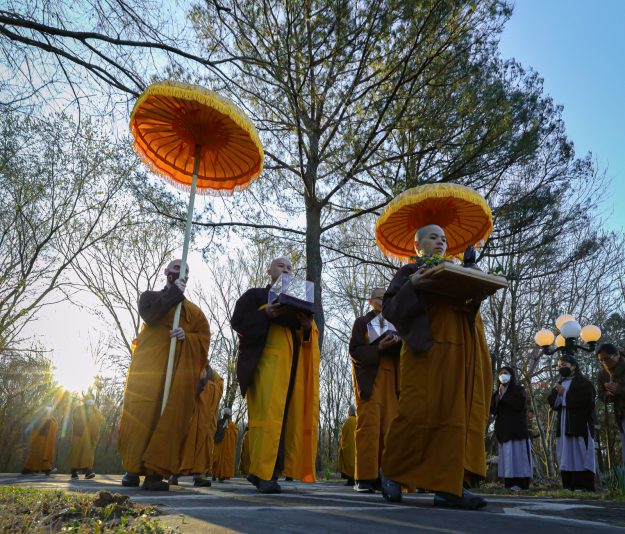
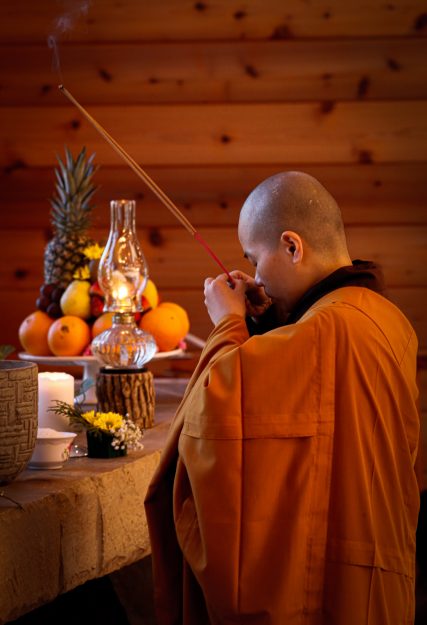
What an incredible blessing to be included in the final homecoming of Thay to one of his monasteries. How fortunate I was to have decided to attend this specific retreat. How lucky I was to be able to photograph what turned out to be a beautiful and moving ceremony.
That Sunday was very emotional, and many times I was near tears. But as a photographer, emotions must be put aside so your entire focus can be put on the task at hand. This, in and of itself, is a wonderful discipline in mindfulness. The ceremony started at 8:00 a.m., after breakfast. We all waited with sacred anticipation for Thay’s relics and ashes to arrive from Houston, Texas. Once they did, I experienced the entirety of the ceremony through the different lenses of my cameras.
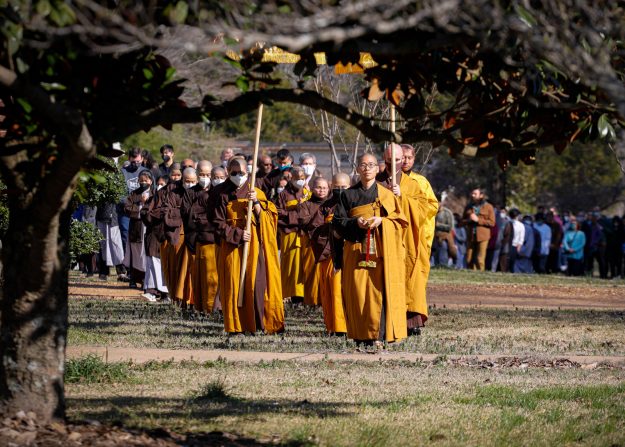
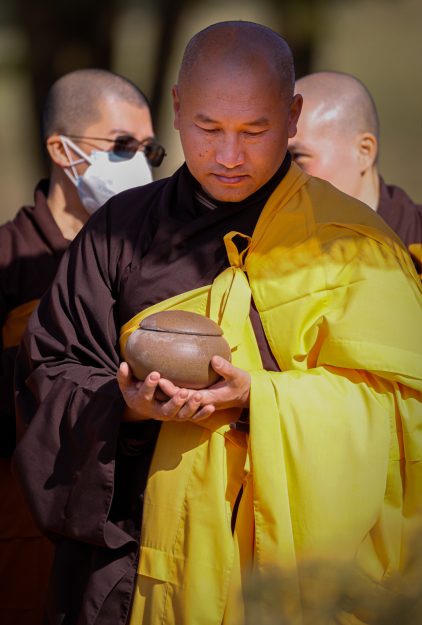
The procession serpentined through the campus from the main gate to the hut Thay used when he visited the monastery, to the large meditation hall, and finally to a small grove toward the back of the monastery that was home to a beautiful statue of Thich Nhat Hanh and Dr. Martin Luther King, Jr. My understanding was that the monastics and novitiates were to receive some of Thay’s ashes in their hands and would spread them around the monastery. So, after I learned that anyone at the monastery could receive some of Thay’s ashes and return them to the soil, my heart filled with joy and the tears I had been holding back for several hours started to drop.
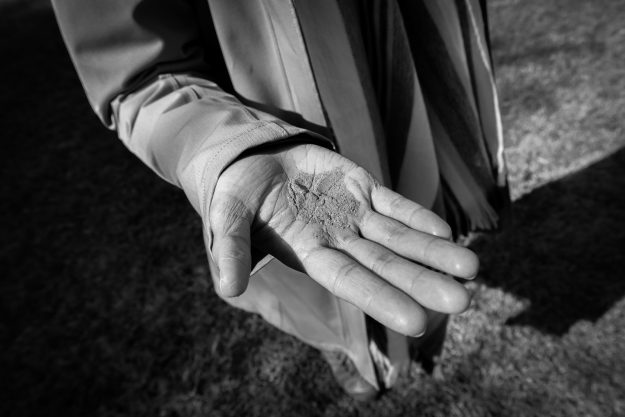
I put my cameras and backpack down after several hours of carrying them throughout the grounds and joined the long line of people waiting to return Thay to the earth. I knew immediately where I was going to spread his ashes after receiving them.
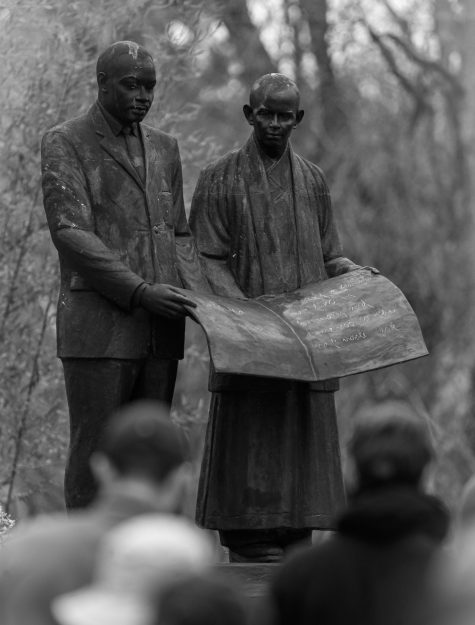
I walked mindfully, quietly, and as sacredly as I could until I was swallowed by the shadow of two giants that had walked our planet, making it more just and peaceful. I looked up at the statue of Thich Nhat Hanh and Dr. Martin Luther King, Jr. and knelt quietly in front of it. I whispered to the ashes, “Thay look. . . your friend has been waiting patiently for you for all these years. It is time you both are together again.” Gently, I released the ashes in the flower bed at the base of the statue, then I reached up and lovingly touched each man on the cheek and the heart and said, “You two have much to catch up on.”
⧫
This article has been condensed and edited for clarity. Read the full version on the author’s website here.
Thank you for subscribing to Tricycle! As a nonprofit, we depend on readers like you to keep Buddhist teachings and practices widely available.
